In December 2010 I had the privilege of birding in Kenya with the incomparable Brian Finch, and on 14 December we stumbled upon an interesting small sandpiper at Lake Nakuru. We had talked about the possibility of Dunlin (only a few Kenya records) and were looking through the many Ruffs, Curlew Sandpipers, and Little Stints when this bird flew in. It stood out immediately as a bit stockier and smaller than the Curlew Sandpipers, darker and browner above and with a complete grayish breastband, but the very long wings projecting well past the tail, along with other details, showed that it was not a Dunlin.
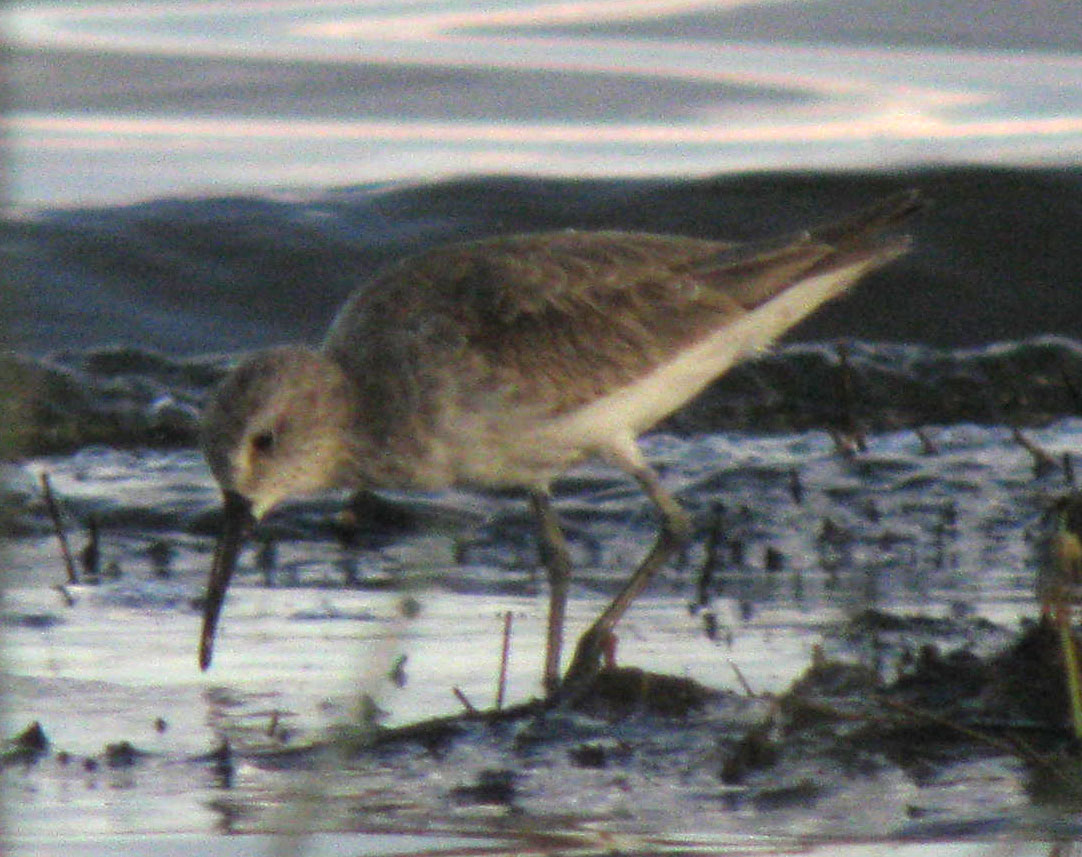
We pondered the bird for about twenty minutes in the fading light, and I took a series of photos and video which would be sharper except for the distance, low light, and wind. Having ruled out Dunlin we went back to the possibility that it was just an odd Curlew Sandpiper, then reconsidered Dunlin, and so on. In the end we concluded that it must be a hybrid. A list of the features that are wrong for Curlew Sandpiper follows:
- slightly but distinctly darker and browner above than any other Curlew Sandpiper present
- complete smudgy gray-brown breastband and breast sides (unlike the white breast with fine gray flecks shown by Curlew Sandpipers)
- legs pale olive-gray (We considered the possibility that this could be some other material like dried mud or salt encrusted on the legs, but all Curlew Sandpipers and Little Stints present showed black legs. No other birds in the vicinity showed a similar leg color, and there was no sign that this was anything other than the actual leg color.)
- rump (seen briefly in flight, no photos) was not all white, but showed a dark central stripe that nearly reached the tail
- In general impressions it seemed slightly smaller and with different proportions than Curlew Sandpiper, but this is just an impression
- feathers of upperparts more worn than other birds present, with just a few new non-breeding type feathers showing
More photos are below, and a video is posted here: http://www.youtube.com/watch?v=tMfV4Ve4-TM
For comparison, many photos of Curlew Sandpiper can be seen at Oriental Bird Images.
Many of these features are matched by variation in Curlew Sandpiper, and it is possible that this is merely an odd Curlew Sandpiper, perhaps a very worn juvenile just beginning to molt into first-winter plumage. And I look forward to hearing comments on leg color and other features from those who have more experience with Curlew Sandpiper. For now, the pale legs and partially dark rump, along with our sense in the field that it was something different, cause me to lean towards a hybrid.
It foraged along the lakeshore, alone but often near Little Stint or other species. All of the Curlew Sandpipers in that area were foraging in the shallow pools surrounded by grass just back from the edge of the lake. Unfortunately we never had a direct comparison between this bird and a Curlew Sandpiper, but by looking from one to the other we could appreciate the differences, which were quite obvious.
If it is a hybrid, it is likely that Curlew Sandpiper is one of the parents, so the other parent must be generally similar in size (or slightly smaller), slightly darker/browner above and on the breast, with a dark rump and pale legs. Both Pectoral and Sharp-tailed Sandpiper fit those criteria, so this might be a Curlew x Pectoral (“Cox’s) Sandpiper or a Curlew x Sharp-tailed (“Cooper’s”) Sandpiper. However, for either of those combinations I would expect to see darker upperparts with more obvious dark feather centers. (I would appreciate any info on the appearance of non-breeding “Cox’s” Sandpiper, as very little seems to have been published.)
This bird must have a different parentage than the apparent hybrid I saw in Thailand in February 2010, as the Thailand bird was smaller, browner, and generally less like a Curlew Sandpiper.
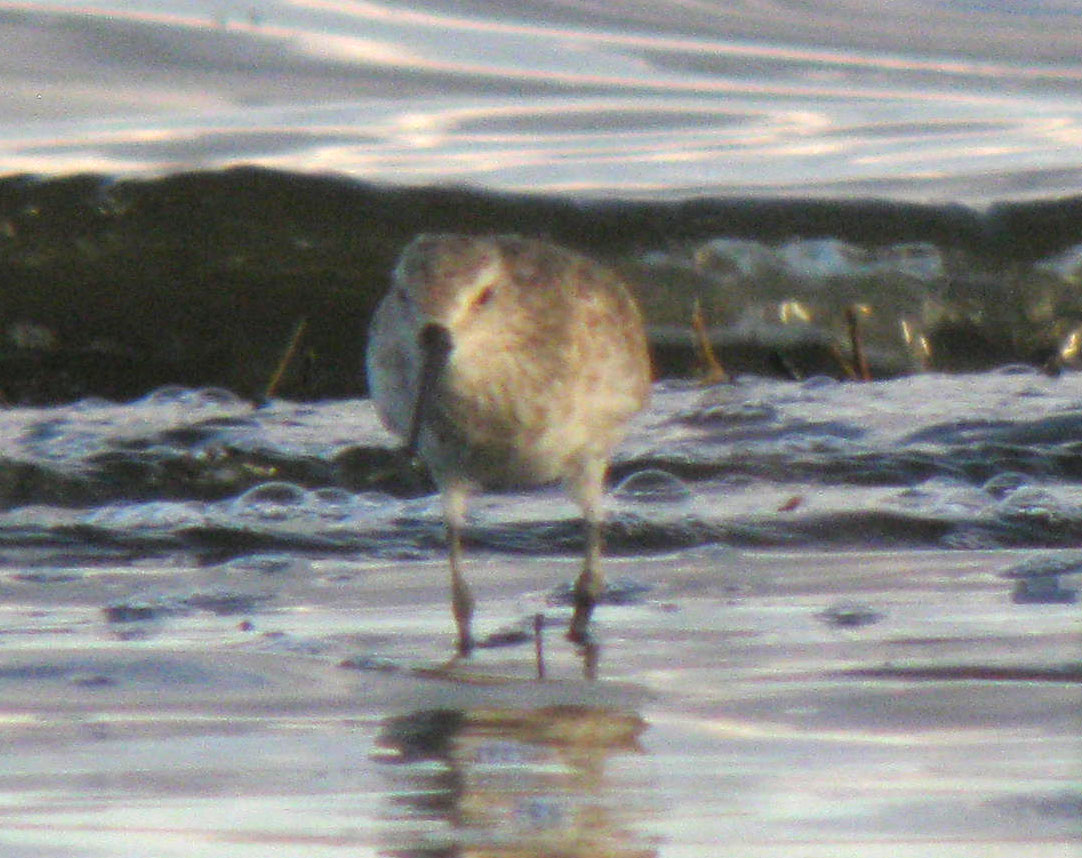
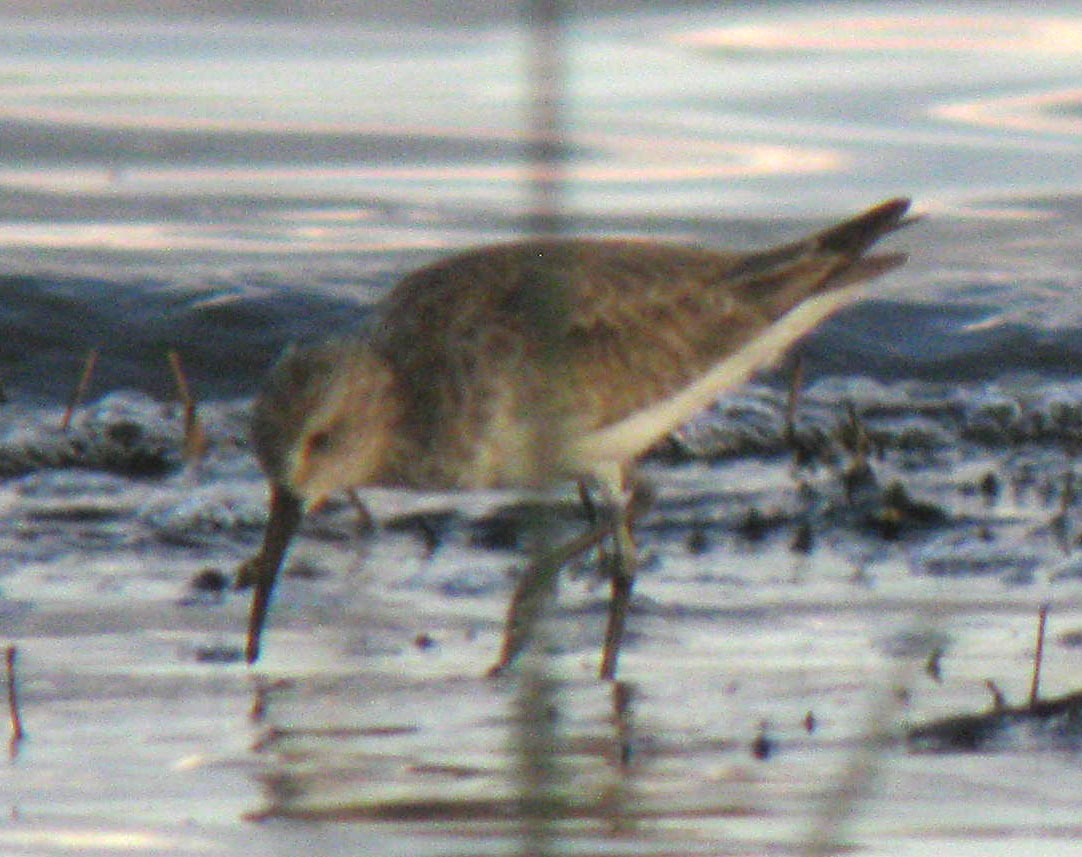
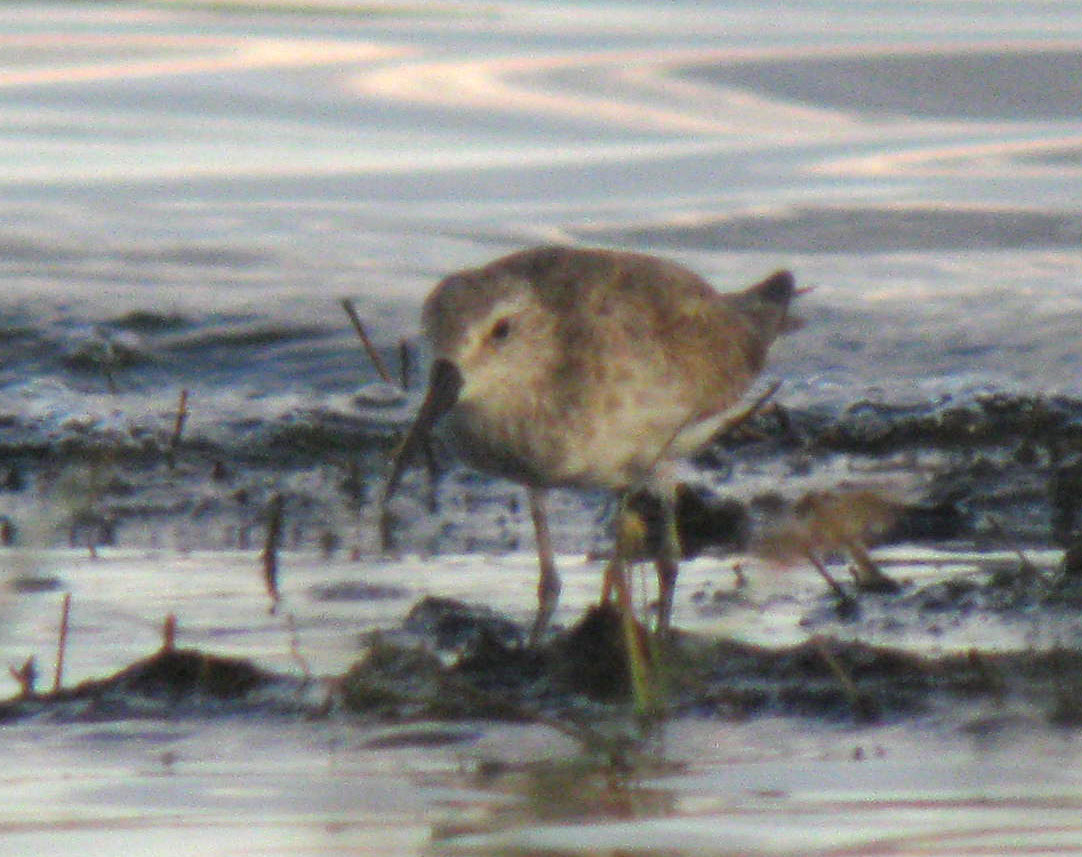
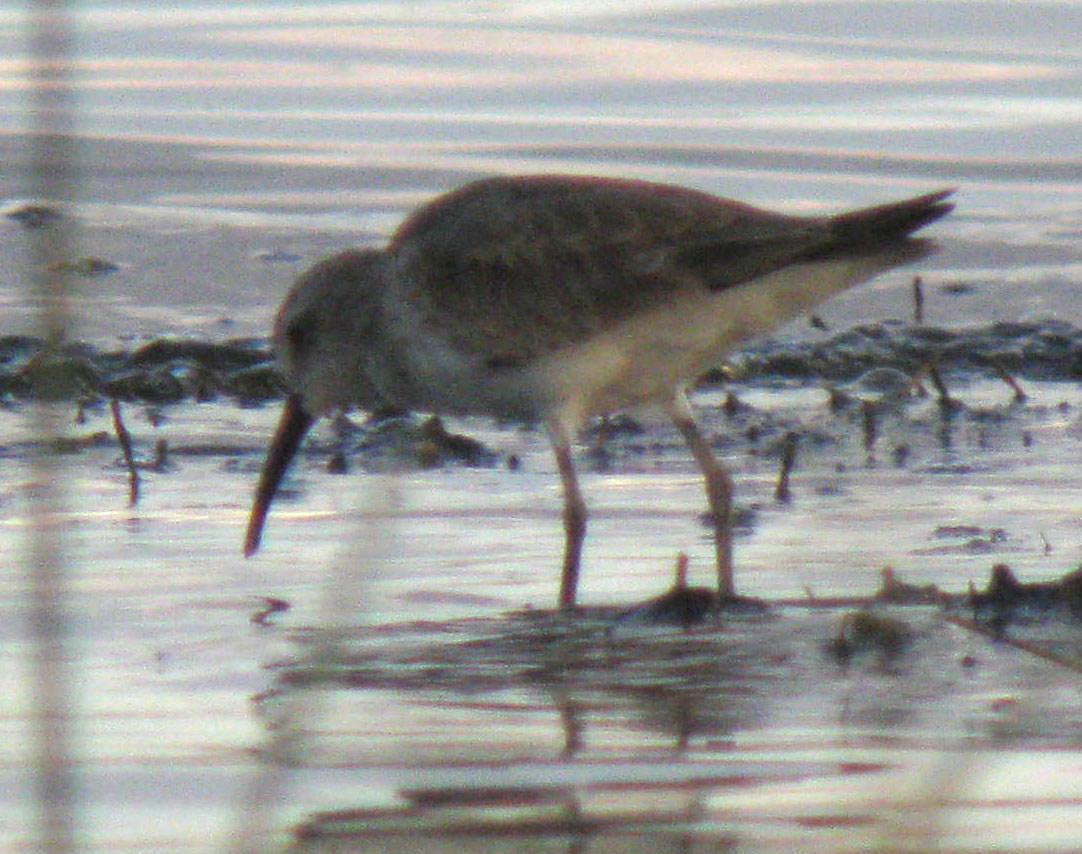
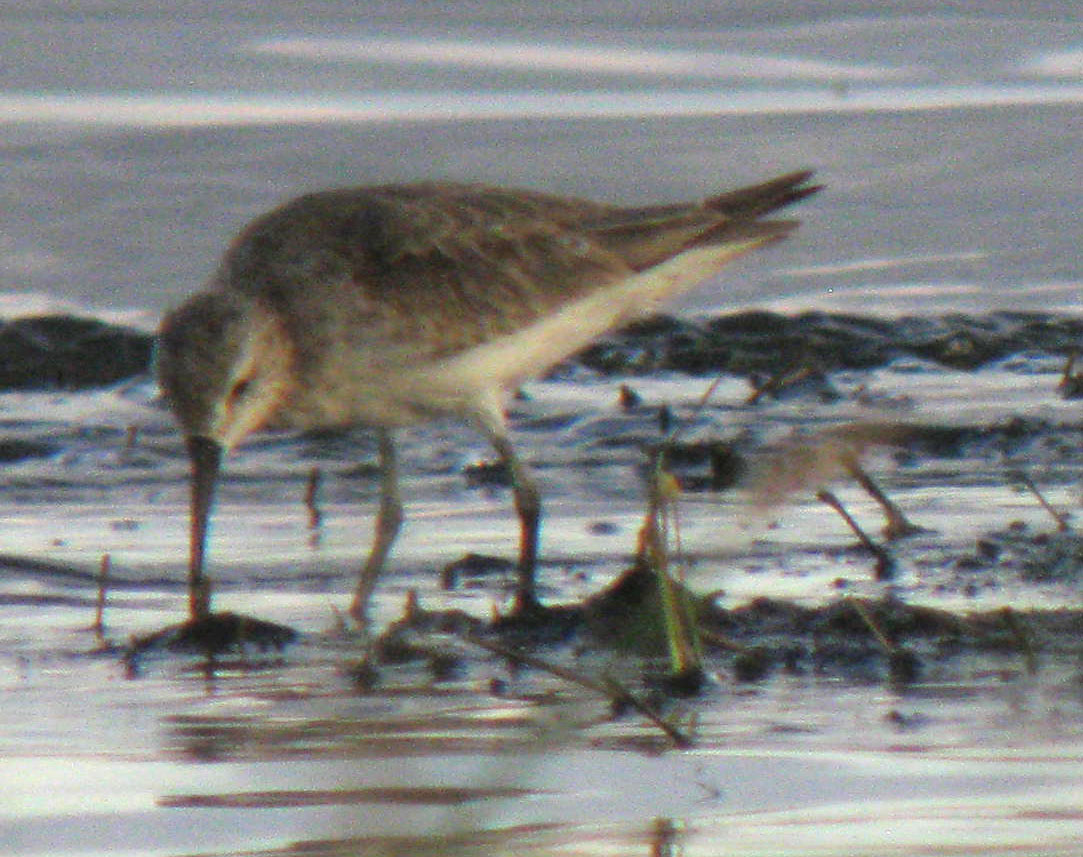
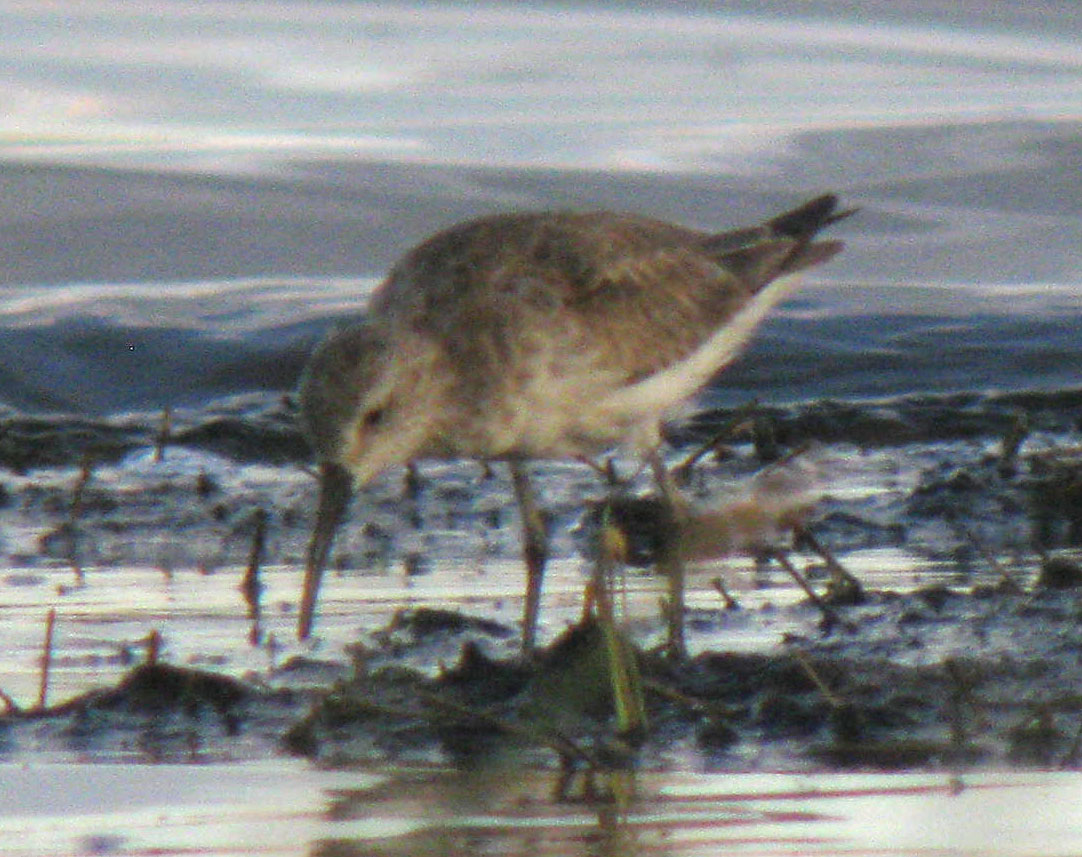
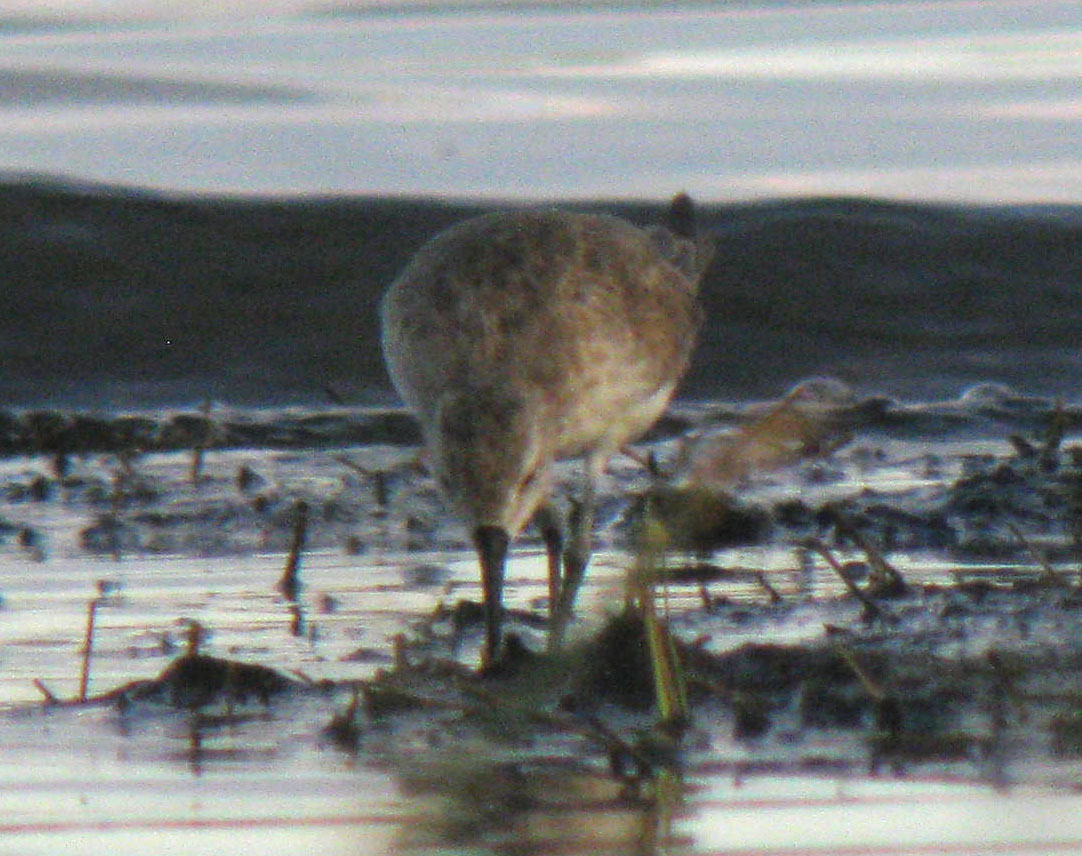
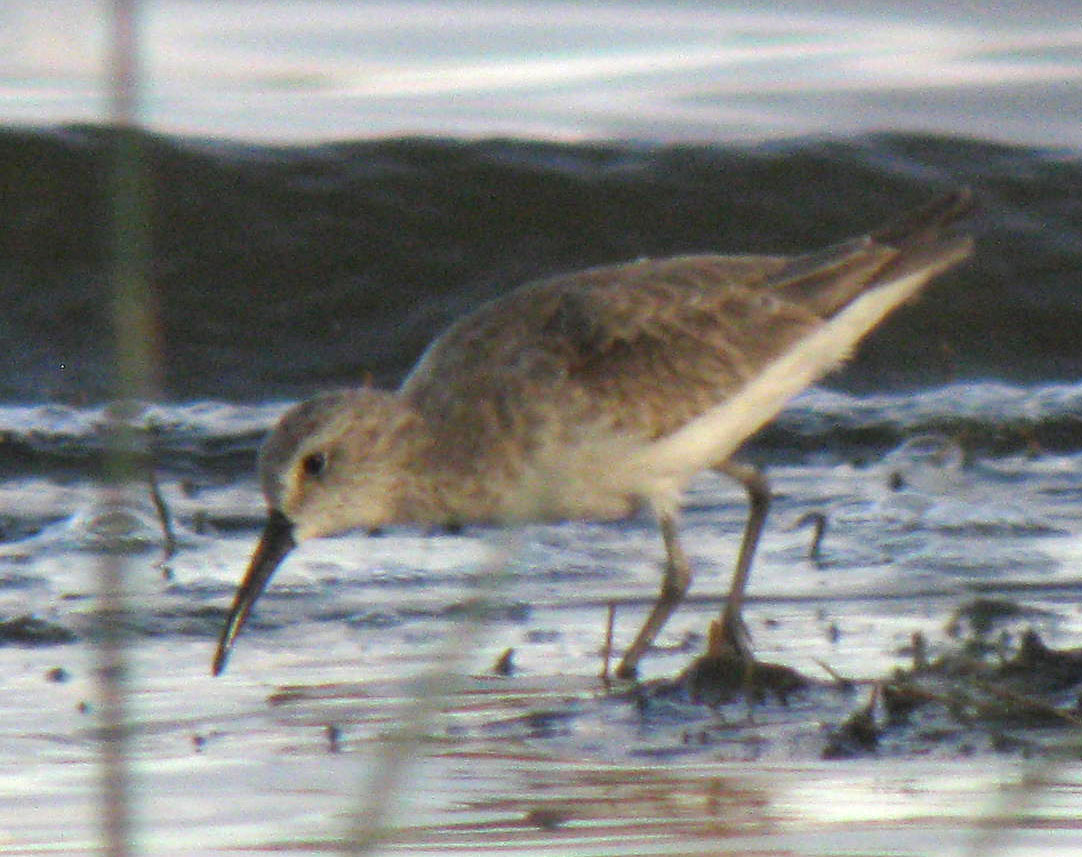
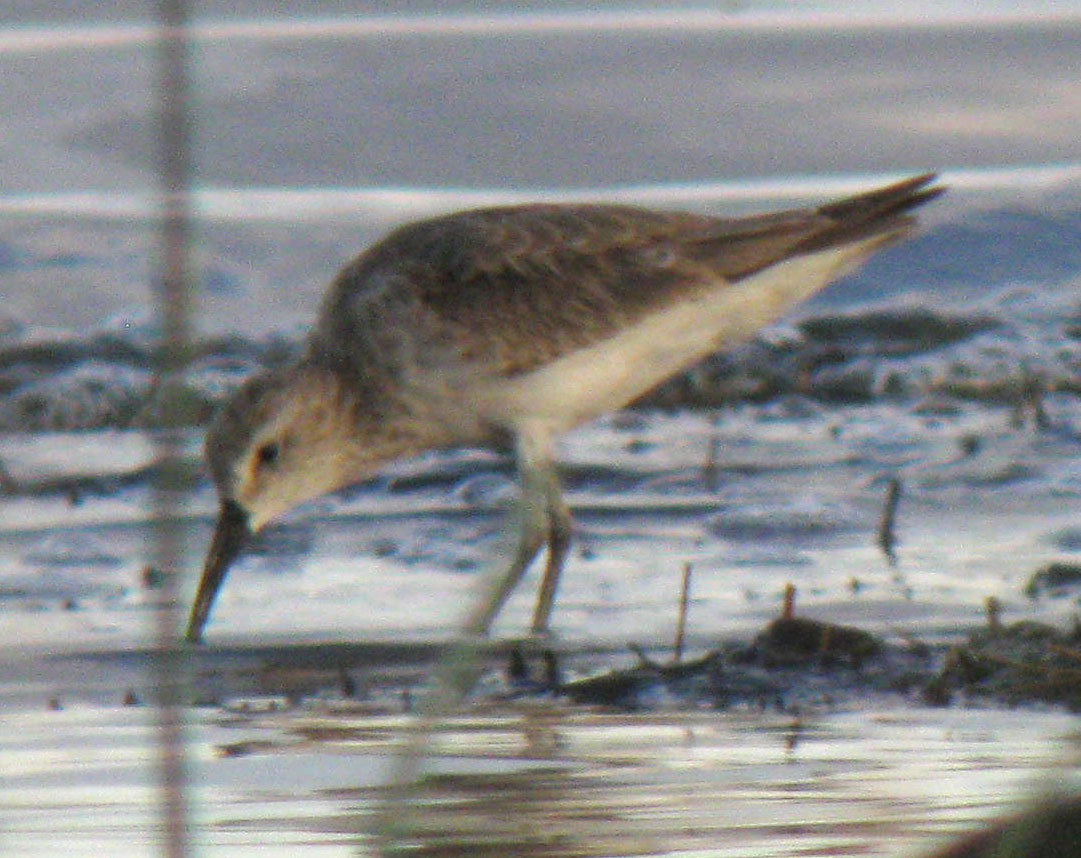
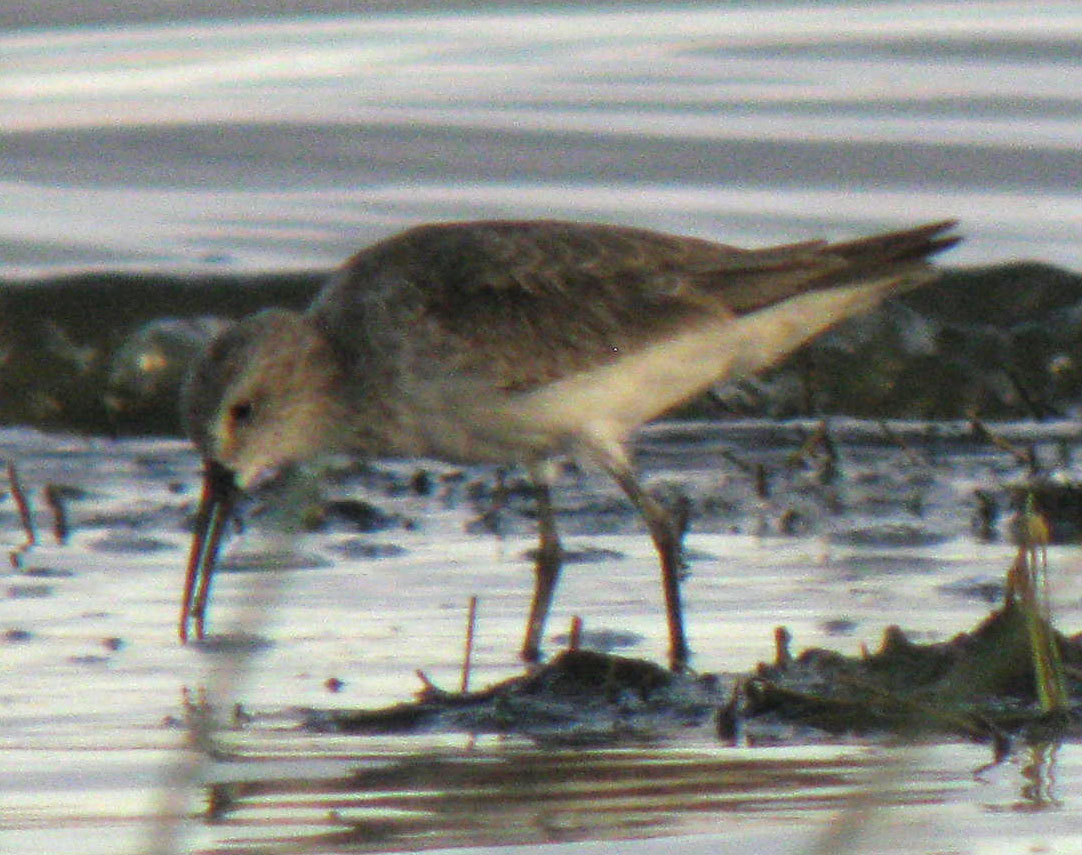
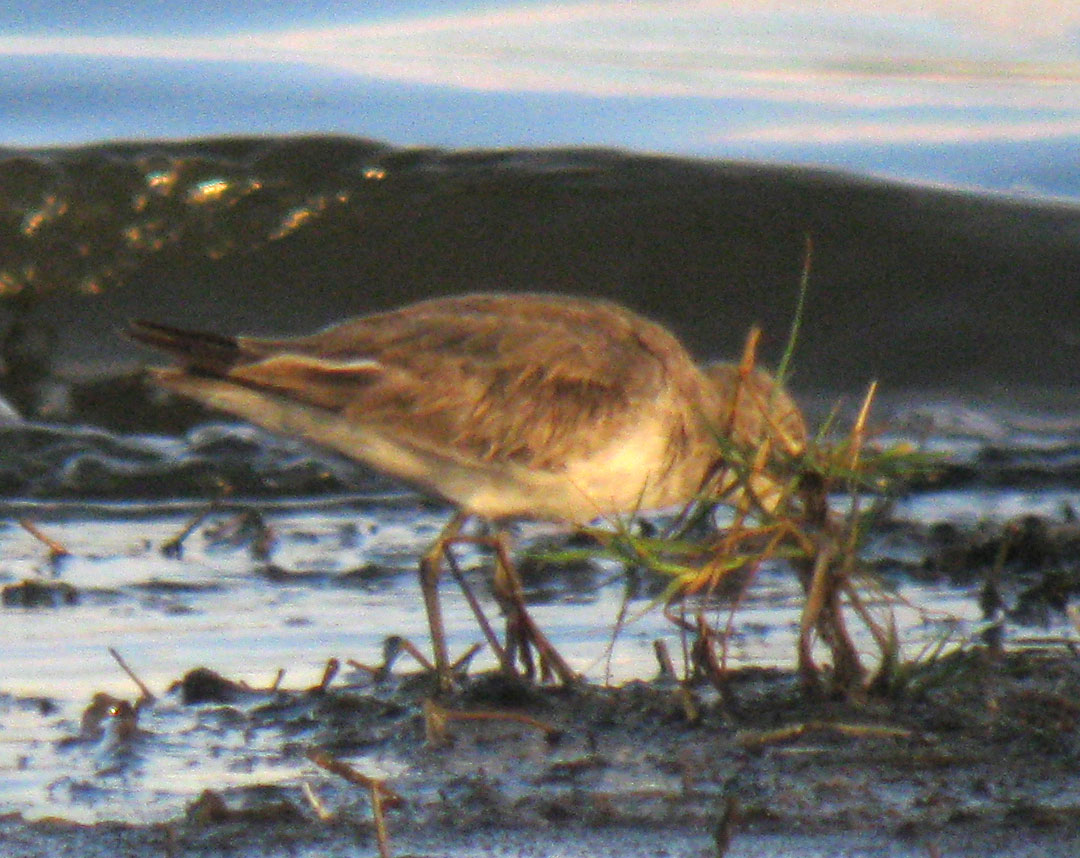
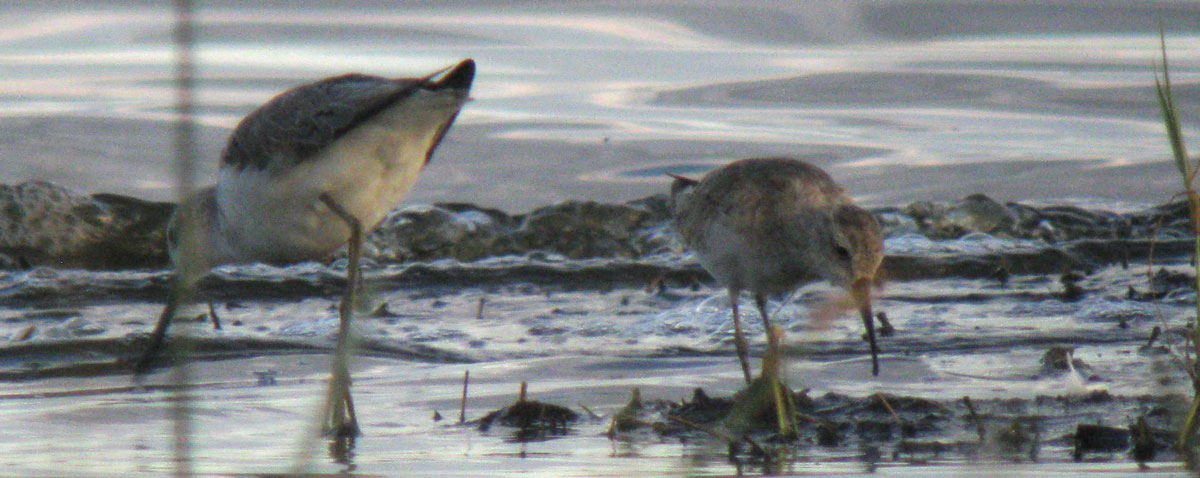
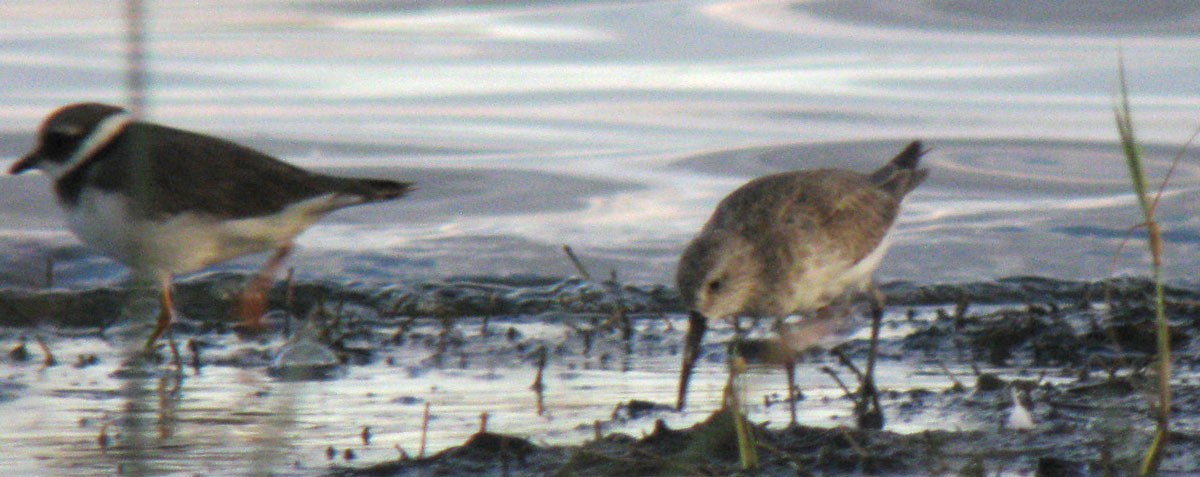
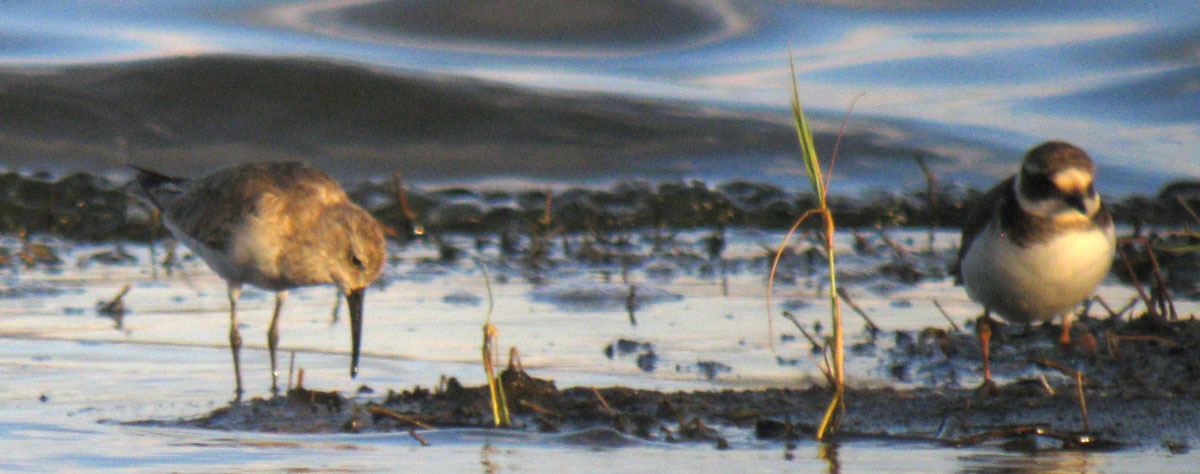
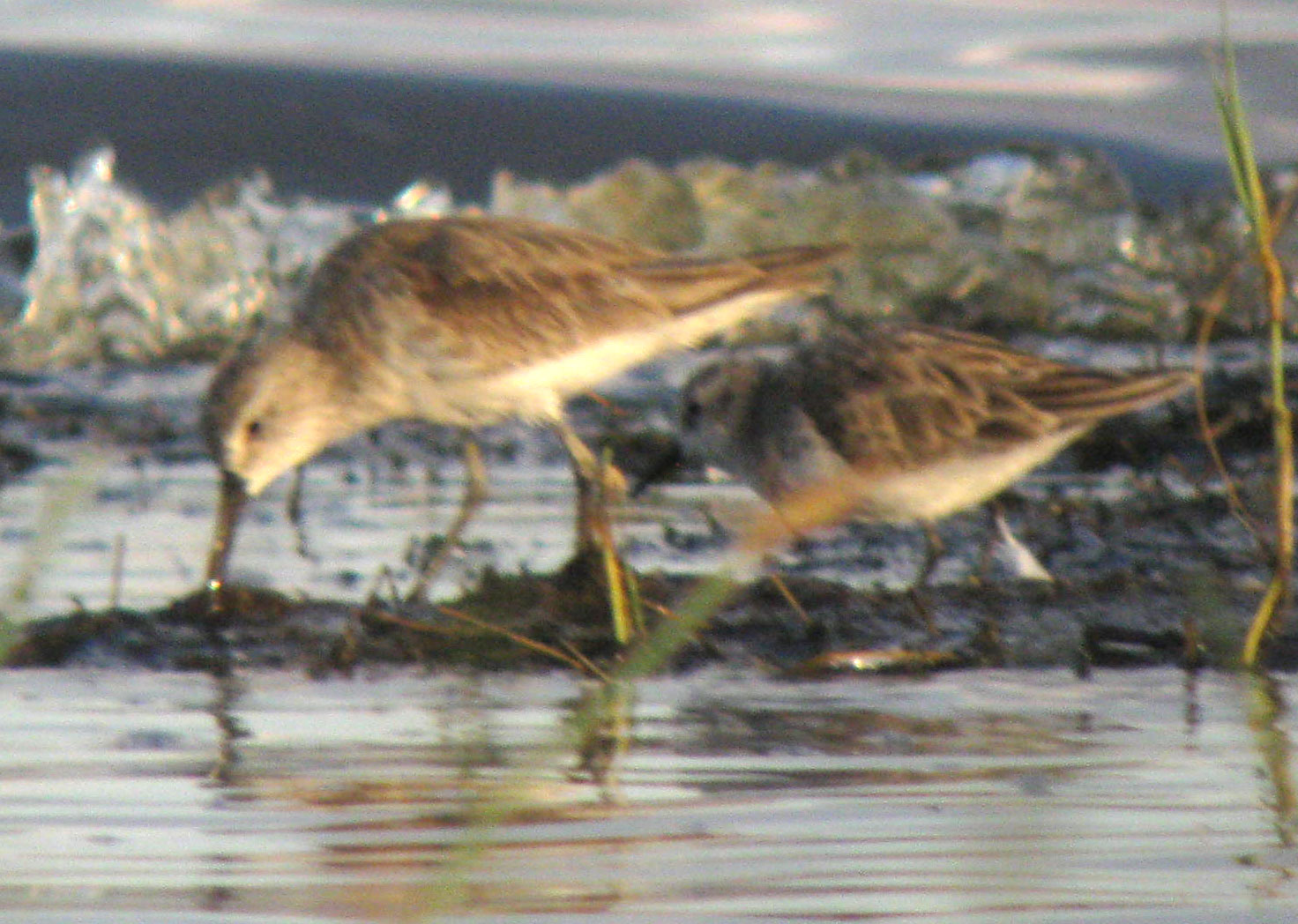
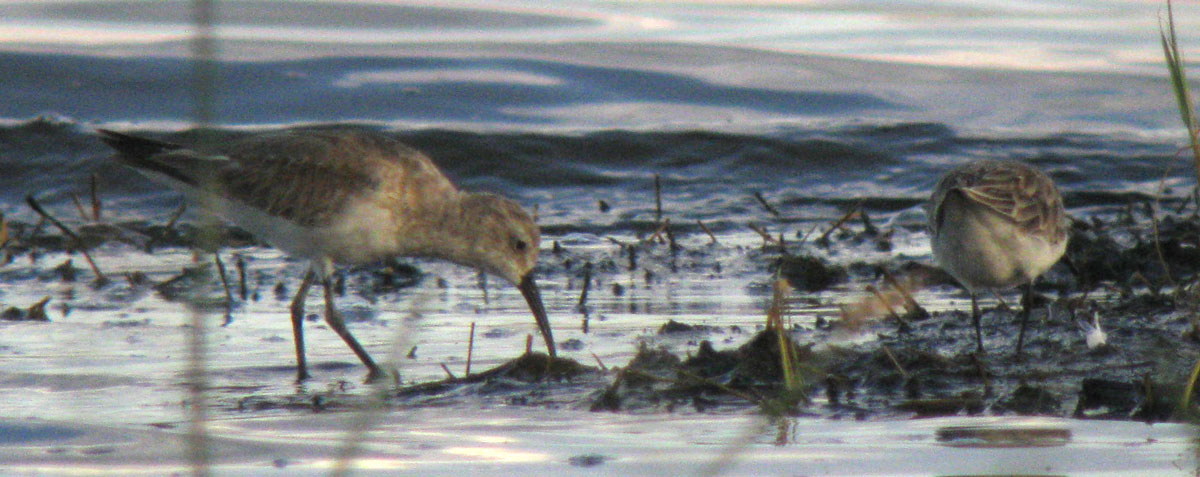
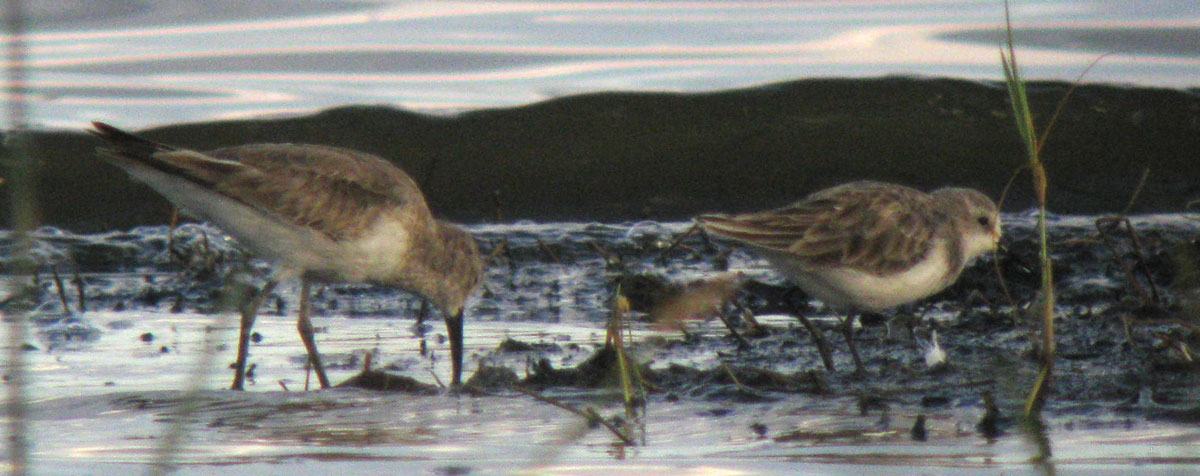


It seems to share some characteristics with a bird Richard Fray photographed in Willcox, AZ last month – especially the breastband and wing length. AZ bird has black legs and may be smaller, though. Lots of opinions on it but no consensus!
link: http://www.rpf-wildlife-photos.com/shorebird.php
I’ve studied the Arizona bird a bit and I do think it’s a hybrid, but any resemblance to the Kenya bird is just a result of the fact that nearly all shorebirds look alike in nonbreeding plumage. This Kenya bird was quite a bit larger like Dunlin/Curlew Sandpiper (the Arizona bird described as about the same as Least Sandpiper). And the Arizona bird has strong dark centers on the mantle and scapular feathers. These birds are really challenging puzzles, but I wonder if hybrid sandpipers are becoming more frequent, or if we’re just getting better at detecting them?